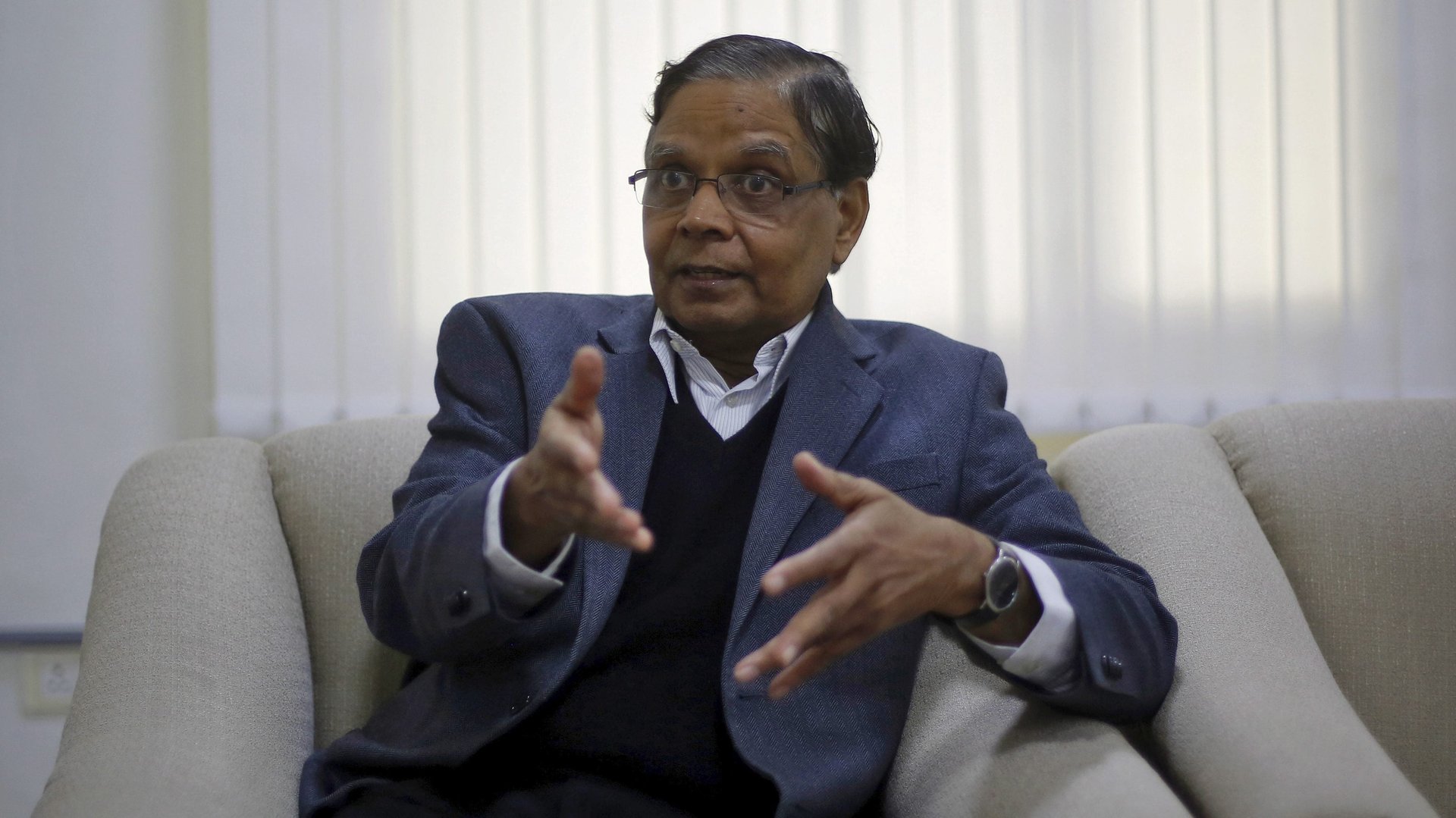India risks undoing a generation of economic reforms, says Modi’s former advisor
Prime minister Narendra Modi has applauded India’s latest budget delivered by his finance minister Arun Jaitley, but the parallel chorus is fading out by the day. If it was India’s central bank governor last week, this time it’s none less than one of Modi’s former advisors, Arvind Panagariya, who was also deputy chairman of the Niti Aayog until August 2017.


Prime minister Narendra Modi has applauded India’s latest budget delivered by his finance minister Arun Jaitley, but the parallel chorus is fading out by the day. If it was India’s central bank governor last week, this time it’s none less than one of Modi’s former advisors, Arvind Panagariya, who was also deputy chairman of the Niti Aayog until August 2017.
“With substantial liberalisation under prime ministers P V Narasimha Rao and Atal Bihari Vajpayee, India became the first democracy to achieve 8%-plus growth for nine years beginning in 2003-04,” Panagariya wrote in the Economic Times newspaper on Feb. 12. “Sadly, a new generation of bureaucrats seems to have now replaced its more enlightened predecessor. It is on course to erect the wall of protection all over again.”
Panagariya’s gripe is over the proposed hike in customs duties for a long list of products ranging from kites and footwear to cellular mobiles phones, smart watches, and motor vehicles. According to him, these will raise the burden on consumers.
“We followed these policies for 50 years and yet produced no notable success,” wrote Panagariya, a professor of economics at New York’s Columbia University.
The growing grouse
The veteran economist is not the only one to express annoyance with finance minister Arun Jaitley’s latest proposals.
“Departing from the trend of several preceding years and to boost the ‘Make in India’ initiative, the government has increased the customs duty on several products resulting in imported goods becoming more expensive,” consulting firm KPMG wrote last week.
The government’s desperation to generate employment through protectionist sops follows the limited progress of its flagship programme, Make in India. Private capital investment has been scarce till now, and due to many reasons, including tepid demand and excess capacity, there is limited room for borrowing. Meanwhile, banks saddled with bad loans have little bandwidth to lend either.
Sliding household savings, too, have taken a toll on investment. “The ratio of domestic savings to GDP rose from 29.2% in 2003 to a peak of 38.3% in 2007, before falling back to 29% in 2016,” the government’s latest economic survey (pdf) noted.
Still, the budget proposed to impose tax on gains from long-term financial investments, which will have repercussions, as Reserve Bank of India (RBI) governor Urjit Patel pointed out last week:
The taxation on capital in India is from several sources. And I think then at the marginal rate, it adds up. You have a corporate tax rate, you have a dividend distribution tax rate, for dividend income above Rs10 lakh you have a marginal tax rate, you also have securities transaction tax, and you have a capital gains tax. So there are five taxes on capital. That would also have an impact on investment and savings decisions.
Words vs action
While Modi preached globalisation to the world’s biggest capitalist convention, the World Economic Forum in Davos last month, at home, his finance minister was busy putting final touches to a budget that was solely aimed at wooing voters—not investors.
Indeed, India needs more manufacturing jobs to support its bulging young population, and the country’s manufacturing needs support to stand on its own feet. But the budget seems to be a case of missing the woods for the trees, as Panagariya explained:
When our producers of even the most labour-intensive products such as garments, footwear, and furniture, and wholly traditional items such as kites and rakhis are unable to outcompete foreign suppliers on our own soil, there has to be something seriously wrong with our domestic regulatory policies. Unless we work on a direct removal of these hurdles, we would keep hurting our own consumers through higher tariffs without preparing our entrepreneurs to challenge the competitors in the global marketplace, which is what is ultimately needed to build the new India.
Panagariya invoked the American philosopher George Santayana who wrote, “Those who cannot remember the past, are condemned to repeat it.” At stake is nearly three decades of slow-but-steady reforms, now at risk of getting undone.